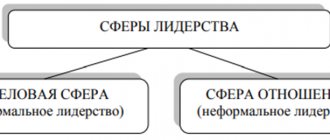The question of how feelings differ from emotions has been addressed in psychology. We all lived through both for the first time in early childhood. However, their depth and versatility are amazing. There is always a little pain in the words “I’m doing great,” sympathy in the phrase “I don’t care,” sarcasm in every “I was joking.” Our heart ensures the movement of blood and dances with joy, bursts with pain, freezes with fear. We hide experiences and display them, we suffer and enjoy, we are captured by them and controlled by them.
Concept and examples of emotions
I'll start with a definition. These are spontaneous states, effects caused by external and internal momentary stimuli. They have important features:
- arise during significant events and situations;
- are a response to a specific phenomenon in a clear time period “here and now”;
- appear unconsciously;
- associated with the release of hormones and neurotransmitter activity;
- are expressed quickly and impulsively, and therefore are more noticeable.
It could be delight, resentment, anger, joy.
They make it possible to adapt to the situation and make an adequate decision. For example, stopping in front of a car rushing at high speed will be helped by fear, and the irritation from the fact that “you are not you when you are hungry” will go away if you eat something tasty. Emotions and feelings are not the same thing, although at the everyday level these concepts are sometimes interchangeable. The external reaction will follow immediately when you are scared by a dog or you get a promotion. It is almost impossible to hide it. It manifests itself:
- at the physiological level, changing hormonal levels;
- in behavior, bitter tears or uncontrollable enthusiastic squealing;
- in cognition, leaving the history of the experience in memory.
World of Psychology
Emotions (translated as exciting, shaking) are a psychological process of subjective reflection of a person’s most general attitude towards objects and phenomena of reality, towards other people, towards himself regarding the satisfaction or dissatisfaction of his needs, goals and intentions.
Emotions are one of the forms of reflection of the real world by consciousness. However, emotions reflect objects and phenomena not in themselves, but in their relation to the subject, their significance. Emotions are determined, on the one hand, by internal needs and motives, and on the other, by the characteristics of the external situation.
Properties of emotions:
- The subjective nature of emotions (the same event causes different emotions in different people).
- Polarity of emotions (emotions have positive and negative signs: satisfaction - dissatisfaction, sadness - fun...).
- The phasic nature of the emotional nature of emotions in their dynamics from the quantitative side. Within the same emotional state (one modality), fluctuations in its intensity according to the type of tension - discharge and excitement - calm are clearly detected.
Classification of emotions
In the emotional sphere, there are 5 groups of emotional experience: affects, emotions themselves, feelings, mood, stress.
Affect is a strong, violent, but relatively short-term emotional reaction to an external stimulus that completely captures the human psyche (rage, anger, horror, etc.).
Emotions are a direct, temporary emotional experience of a person’s attitude to various external or internal events.
An emotion arises as a reaction to a situation; unlike affect, it is longer lasting and less intense; it is emotional excitement. Emotion as a reaction arises not only to real events, but also to probable or remembered ones. Emotions are more biased toward the beginning of an action and anticipate its outcome. All emotions can be classified according to modality, that is, the quality of experience.
Feelings (higher emotions) are special psychological states, manifested by socially conditioned experiences that express a person’s long-term and stable emotional relationship to real and imaginary objects. They are often called secondary emotions, since they were formed as a kind of generalization of the corresponding simple emotions. Feelings are always objective. Therefore, they are often classified depending on the subject area:
- Moral (moral and ethical).
- Intellectual, practical.
Psychological theories of emotion
In the XVIII – XIX centuries. there was no single point of view on the origin of emotions, but the most common was the intellectualist position: “bodily” manifestations of emotions are a consequence of mental phenomena (Gebart)
- James-Lange's "peripheral" theory of emotions. The emergence of emotions is caused by external influences leading to physiological changes in the body. Physiological-bodily peripheral changes, which are considered as a consequence of emotions, became their cause. Each emotion has its own set of physiological manifestations.
- Cannon-Bard's "thalamic" theory of emotions. Emotions and corresponding signals of activation of autonomic functions arise in the thalamus. Psychol. experience and physiological reactions occur simultaneously.
- Papez circle and activation theories. Emotion is not a function of individual centers, but the result of the activity of a complex network of the brain, called the “Circle of Papes.”
Cognitive theories of emotion. They discover the nature of emotions through the mechanisms of thinking.
L. Festinger's theory of cognitive dissonance. Cognitive-psychological factors play an important role in emotions. Positive emotions arise when a person’s expectations are confirmed, that is, when the actual results of an Activity are consistent with the intended plan.
Information theory of emotions P.V. Simonova. A set of functions that influence the occurrence and nature of emotions is presented in symbolic form:
Emotion = P x (In - Is). P – current need. (In – Is) – probability assessment.
There are different schools, which determines the difference in definitions and classifications.
- James-Lange. Psychoorganic concept of the essence and origin of emotions. He placed physiological states as the basis for emotional manifestations. They are primary, and emotions accompany them. Under the influence of external stimuli, the body changes, emotions arise through a feedback system. “We are sad because we cry, not because we cry because we are sad.” This is the central theory for all psychology to this day.
- Psychoanalysis. Reactions are associated with drives. The reason for its occurrence is the discrepancy between the desired situation and the actual one.
- Behaviorism. An accompanying reaction to a specific stimulus. Ideas about emotions are impoverished by the fact that the central link is not considered, but reinforcements are considered. They can be positive and negative, respectively, emotions can also be both positive and negative. They are not perceived as internal experiences (grief is no different from melancholy).
- Cognitive psychology – there is a normal experimental base.
- Schechter. 2-factor theory of emotions (development of the James-Lange theory). Emotions arise as a cognitive assessment of a physiological shift. Two factors influence: cognitive, psychological.
- Lazarus. 3 component theory. The following components influence: cognitive, psychological, behavioral. Not only the physiological shift is assessed, but also the possibility of behavior in a given situation, the ability to interpret: emotions arise if we perceive everything as really happening. If you subject everything to rational analysis, there are no emotions.
- Rubinstein. Emotion is something associated with a certain excitation of certain areas in the subcortical structures - a reaction to a stimulus, feelings - before the stimulus, something that can be verbalized, or has already been verbalized, once verbalized, it means realized. Emotions and needs. Emotions are a mental reflection of the current state of human needs. Emotions are a specific form of the existence of a need; as a result, a desire appears for something that will lead to the satisfaction of the need (an object), but then the object delivers or does not provide satisfaction, and we develop a feeling towards it. Emotions differ in polarity – “+” or “-”.
- Leontyev. The theory of emotions is based on Activity. It states that behavior, general activity, is stimulated and directed by motive. An activity consists of a series of actions that correspond to a goal. The goal is always conscious, such a unit of activity as an action arises only in a person, the goal is what represents the result of the action. Motive is an object of need. Emotion arises as an assessment of the discrepancy between goal and motive. Emotion allows you to evaluate the approach to the object of need using a certain action.
Psychophysiological mechanisms
In the process of evolution of the animal world, a special form of manifestation of the reflective function of the brain appeared - emotions (from the Latin I excite, excite). They reflect the personal significance of external and internal stimuli, situations, events for a person, that is, what worries him and is expressed in the form of experiences. In psychology, emotions are defined as a person’s current experience of his attitude towards something. In addition to this narrow understanding, the concept of “emotion” is also used in a broad sense, when it means a holistic emotional reaction of a Personality, including not only a psychological component - an experience, but also specific physiological changes in the body that accompany this experience. In this case, we can talk about the emotional state of a person.
The everyday understanding of the word “feelings” is so broad that it loses its specific content. This is the designation of sensations (pain), the return of consciousness after fainting (“come to your senses”), etc. Emotions are often called feelings. In reality, the strictly scientific use of this term is limited only to cases of a person expressing his positive or negative, i.e. evaluative attitude towards any objects. At the same time, unlike emotions that reflect short-term experiences, feelings are long-term and can sometimes remain for life.
Feelings are expressed through certain emotions, depending on the situation in which the object towards which the person expresses the feeling finds itself. For example, a mother, loving her child, will experience different emotions during his exam session, depending on what the result of the exams will be. When a child goes to an exam, the mother will be anxious; when he reports a successful exam, he will be happy, and if he fails, he will be disappointed, annoyed, and angry. This and similar examples show that emotions and feelings are not the same thing.
Thus, there is no direct correspondence between feelings and emotions: the same emotion can express different feelings, and the same feeling can be expressed in different emotions. Proof of their non-identity is the later appearance of feelings in ontogenesis compared to emotions.
Both can be positive and negative.
Functions
Imagine that the secretary told you that there will be a meeting with the manager today. The topic of the planning meeting is unknown, but she knows for sure that it is very important. How will you react? Be upset or scared, excited or angry, show indifference - everything matters to get the result. You can rely on your emotions or choose tactics to control them.
When the stakes are high, it can be very difficult to overcome temperamental behavior; our reactions guide us and indicate the right actions and decisions. But sometimes we are stubborn and do not want to speak and behave under their influence.
The problem is that if we managed to find a button and turn off the emotional background for a while, things would go even worse for us. We will immediately be accused of heartlessness, indifference and isolation.
It can be very difficult to vividly feel the shades of life, empathize with what is happening around and at the same time behave with restraint and adequately. I have also come across people who express their inner state unexpectedly for others or keep it to themselves. As a result, they begin to be shunned, considered strange or too cold.
It is within our power to learn to keep our emotions in check, to restrain and soften their manifestation, so as not to regret our behavior and not to be ashamed of our actions and words. The main thing is not to overdo it and become too stiff and dry.
Emotionality performs the following functions:
- facilitate choice, prepare people for action;
- report how we feel at the moment;
- stimulate our actions and make them justified.
Emotions: a matter of definition
We encounter different approaches to emotions already at the definition stage. Depending on the theories, views and ideas being analyzed, psychologists, psychiatrists and other specialists sometimes give very different answers to the question of what emotion means. the following definitions seem most appropriate, for example:
:
- emotions are a special class of mental phenomena, manifested in the form of a direct, biased experience by the subject of the life meaning of these phenomena, objects and situations to satisfy his needs (Big Psychological Encyclopedia);
- emotions are states associated with an assessment of the significance for an individual of the factors acting on him and expressed primarily in the form of direct experiences of satisfaction or dissatisfaction of current needs. They are one of the main regulators of activity (Psychological Dictionary);
- emotions are a mental reflection in the form of direct biased experience of the relationship of phenomena and situations to needs (G. Verbina. Psychology of emotions).
All these definitions are united by the perception of the essence of emotions as a reaction to external events and phenomena
. Needs in this context are considered as broadly as possible: these are both needs in the literal sense of the word, as well as desires, plans, ideas about something, etc. Events/phenomena are also widely understood: they can happen now, we can only imagine them or experience them in some other way. Accordingly, all features of emotions, their external (facial expressions, gestures, etc.) and internal (our relationships, experiences) manifestations become a consequence of such a reaction.
Regardless of the interpretation of what emotions are, experts agree that the word itself goes back to the Latin verb emovere
- excite, shock, excite.
Main characteristics
One of the ways of transmitting and perceiving information is emotional coloring. We have taught our smartphones to convey facial expressions by sending the desired emoticon in a written message. It helps to express what we have experienced or experienced.
- Surprise, which provokes curiosity, encourages exploration and learning new things.
- Dislike helps protect against harmful and dangerous things and preserves health. It is associated with the instinct of self-preservation.
- Positivity brings joy and goodness; at the level of consciousness, it improves memory and develops erudition.
- Fear and cowardice, which protect against danger, make the reaction lightning fast.
- Rage and irritation are our self-defense; they sweep away obstacles like a hurricane and lead to achieving our goals.
- Melancholy and despondency bring not only dullness and apathy. When we are sad, we become closer to other people, stop the rush of events and pay attention to those aspects of life that were previously left outside.
To put it briefly, how emotions differ from feelings is that they are not private. For example, a family quarrel, the wife accused her husband of not having time to pick up the child from school. They speak in a raised voice and sound irritated and annoyed. But even if they were both silent, their faces, bodies and eyes would give them away. Most of our reactions have signals that clearly and easily communicate to others what we are feeling. While our thoughts remain inaccessible.
Psychologist Daria Milai
Make an appointment
Definition of feelings in psychology and examples
They are characterized by depth and stability. This is not an outbreak, but a process that manifests itself in attitudes towards people, values, and behavior. I distinguish between high and low sensory levels. The first is related to social life and is divided into:
- Moral. Formation of a value system that implies an attitude towards friendship, fidelity, love, decency, compassion. It is brought up over the years, developed under the influence of family and environment, personal life experience and principles.
- Intelligence. Manifests itself as a result of learning and cognitive activity.
- Perception of beauty. It is carried out through art, cinema and literature.
The need to understand a concept, to comprehend it, is how a person’s feelings differ from his emotions. They cannot be imagined without deep analysis and evaluation. For example, to love your Motherland, you need to know what this word means, who patriots are, what they experience and how they behave. It can be difficult for us to explain what we feel. A loving mother is boiling over the mess in the room, and a guy in love is angry when he reads a text message that the meeting will not take place.
What are moral feelings?
Moral feelings include feelings of sympathy and antipathy, affection and alienation, respect and contempt, gratitude and ingratitude, love and hatred. Among moral feelings, the sense of camaraderie and friendship, the sense of duty and conscience should be particularly highlighted.
Interesting materials:
How to add an extension in Yandex browser? How to add a website to Google home screen? How to add a site to the Yandex allowed list? How to add a page in Adobe Acrobat? How to add your GIF to VK history? How to add a timer to a slide? How to add an item to your cart in wish? How to add a track to Google Maps? How to add widgets to iPad? How to add a second line to MTS?
Feelings in childhood
Carefree time, in fact, filled with hard work to form a personality, its emotional immunity, stability, resilience in difficult life situations. During this period, the foundations of empathy are laid, the lack of which in adult life is very difficult to cultivate and compensate for.
Factors of a child’s sensory development:
- formation of higher nervous activity;
- attitude of parents and other adults;
- communication with peers;
- features of the educational process;
- gradual expansion of the range of situations that evoke a response.
It is very important to teach your child not only to express, but also to distinguish between the experiences of other people. Relationships with parents are of particular importance in this. Being loved and loving, living in safety and affection, children open up, gain confidence and peace of mind for life.
Face-to-face consultation
What are the features and advantages of face-to-face consultation?
Find out more
Skype consultation
What are the features and benefits of Skype consultations?
Find out more
What is the difference between feelings and emotions
We are not very pleased that our experiences are open to others; even simple and sociable people are not always ready to let observers into their souls. But the emotional signaling system is constantly in the “on” position. It conveys our reaction, regardless of desire. A bus door slammed in your face, you stained your blouse with a drop of sauce during lunch break, your child entered a prestigious university - you react violently and instantly. It's hard to imagine what life would look like if we could force a switch to turn off.
The impulse arises synchronously with the mood. So, if we are upset or depressed, we speak more quietly; when we calm down, the normal timbre of our voice returns by itself.
Feelings are focused on the subject, are not associated with specific incidents and events, but are expressed through emotions, although they do not always completely coincide with them. You get mad when your friend is late for a meeting, but that doesn’t stop you from loving her and trusting her endlessly.
They are distinguished by stability and longevity; emotional outbursts are short-lived. They have the peculiarity of becoming attached to an object and strengthening or weakening depending on its location. A short psychosis caused by a phone battery dying at the wrong moment cannot be compared with hatred of a person who once betrayed or set you up and met you in a supermarket.
Table: what are the differences between emotions and feelings in psychology
| Criterion | Emotions | Feelings |
| Duration | Short, quickly arise and also pass. | They develop over time, are stable, and accompany a person throughout life. |
| Mindfulness | Spontaneous. | Require understanding, analysis and evaluation. |
| Effect on mood | They appear to be able to provoke a decline or rise. | Not related to the mood. |
| Manifestation | Outside, visible to others. | Inside, they can be hidden from prying eyes for a long time. |
| Depth | Superficial. | Deep. |
| Sustainability | Changeable. | Stable. |
| Self-control | Out of control. | Public broadcasting is subject to control. |
| Opportunity to explain | It's easy to find an explanation. | It can be difficult to find words. |
| What are they tied to? | To a specific situation, event, occasion. | To a subject or object. |
| Difficulty understanding and seeing | Visible and understandable. | It can be difficult to find words. |
| Possibility to hide | Very small, and an attempt to veil them can lead to their incorrect transmission. | Eat. |
| Relationship | Primary, available from birth. | They are transmitted through emotions, but do not always coincide with them. |
Emotions
Emotions are short-term experiences of a person in relation to a certain event. In short, this is an unconscious instant reaction to an action, object, person. It is superficial and passes quickly.
Emotions help a person quickly understand the situation and make a decision. They can affect the functioning of the body. For example, when a person feels frightened, his heart rate increases sharply, his palms sweat, and he loses his breath.
Rice. 3. Manifestation of different emotions.
Correlation of concepts
Their differences and similarities are woven into a lace of amazing complexity. They are interconnected, but do not coincide and do not flow into one another. In life you will not meet one or the other separately, in a “pure” form. Through them a person expresses himself and his worldview.
Ask a question
Both categories have similar properties:
- relate to experiences with and without cause;
- associated with a certain state of mind;
- have direction, strength, duration and stages of development and manifestation;
- expressed in psychosomatic form;
Among the differences, I will highlight those that are significant for emotional signals:
- have a simple structure, talk about one thing: fear, delight, anger, irritation;
- they are characterized by dynamics;
- they are identical in different people.
There are both differences and similarities in the psychology of emotions and feelings. But what we experience when experiencing them is significantly different. You have probably noticed that when a “wave” covers you, you stop feeling even the people closest to you, and a person who is capable of experiencing deep sensations rarely falls into a state of passion.
comparison table
The main characteristics can be clearly and briefly described in the following table:
| Emotions | Feelings |
| Primary | Secondary |
| Short term | Long lasting |
| Related to the situation | Related to object |
| Manifested by bodily reactions | Cannot be physically demonstrated |
| Unconscious | Conscious |
| You can't experience more than one at the same time | Only one sense is available at a time |
To separate these important concepts, it is important to be able to analyze the manifestations of feelings and emotions.
How to understand them
To never make a mistake when classifying two concepts, imagine a control panel with many buttons. Each initiates a process that is predictable, inevitable, and reversible. The mechanism is simple: they turn on the stimulus and get an emotional reaction. Even a baby who has barely learned to hold his head can understand it. Mom smiles at him, which means he’s doing well, and a reciprocal smile will appear on his face; she knitted her eyebrows and raised her voice - he would cry, he was scared and offended.
Awareness of your mood is often quite simple. We are able to explain why we are worried. Feelings are more difficult to explain. They are like a background onto which emotionality is projected. He is able to combine love and anger, joy and pain, melancholy and tenderness.
At any moment we can stop and understand what we feel, where this experience comes from, and what it is connected with. To do this, it is important to correctly express thoughts in words, to be able to describe the process of brain activity and the causes of your condition as accurately as possible. If you don’t listen to yourself, you can get a bunch of mental disorders ranging from psychosis to severe depression.
Patterns
When arising and fading, emotions and feelings have similarities and differences. They are subject to a non-random sequence. Sensory experiences are characterized by:
- Transfer and generalization. Sensations tend to move to objects with similar characteristics, to expand the range of objects to which they apply. Affection for a pet can smoothly flow into love for dogs or cats.
- Attenuation and dullness. Over time, the intensity of passions weakens and the sharpness disappears. Moreover, transformation occurs with both positive and negative experiences; both rage and ardent love become calmer. Habits develop for everything.
- Contrast. Situations experienced sequentially or jointly influence each other. When a light streak comes after a dark streak in life, in contrast it appears impeccably white.
- Generalizability. A property associated with the accumulation of life experience. With age, respect for parents grows and attachment to loved ones strengthens. Negative experiences also add up and, at the slightest irritation, lead to a strong reaction.
Emotional states are characterized by:
- Replacement. The mood changes depending on the situation. Probably, when they say, from love to hate there is one step, this is what they mean.
- Shifting attention. They use it in different ways, for example, switching to a pleasant activity.










